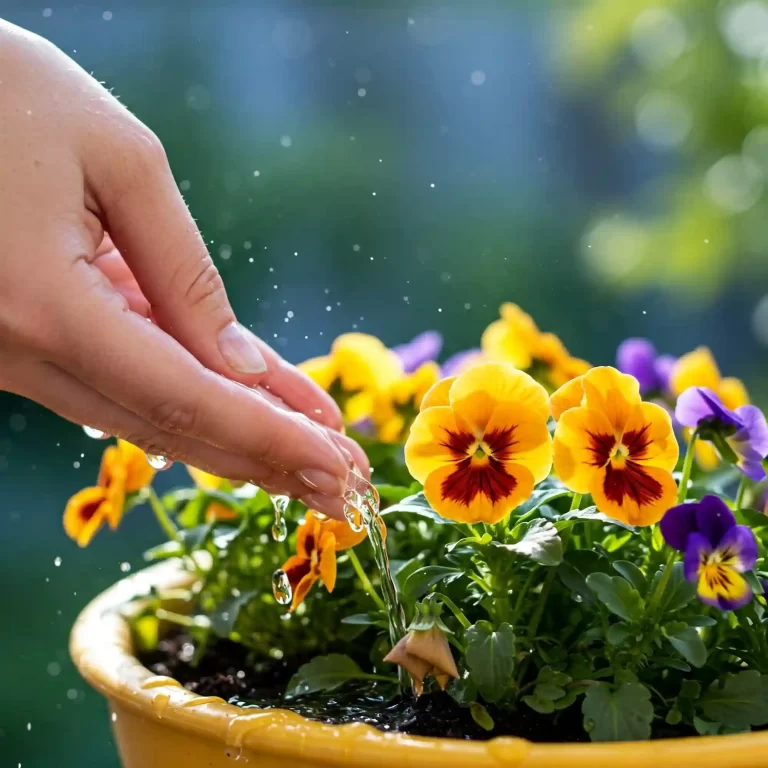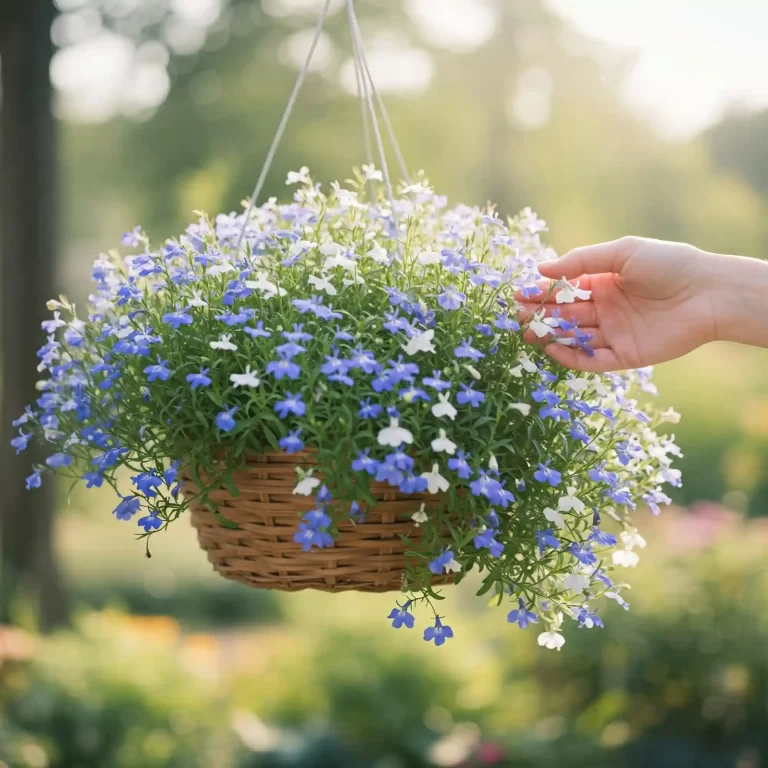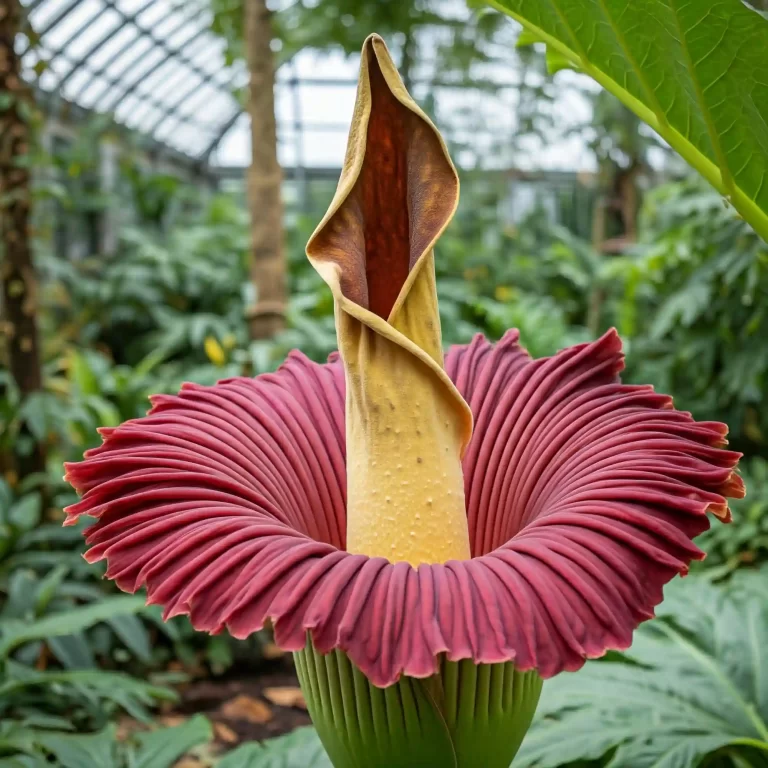Are you struggling to add a touch of elegance and color to your garden? Do you find it challenging to grow flowers that are both beautiful and low-maintenance? Many gardeners face the same dilemma, searching for the perfect plant that can thrive with minimal effort. The solution lies in growing Speedwell flowers. These stunning perennials not only enhance the aesthetic appeal of your garden but also attract pollinators and require little maintenance. In this comprehensive guide, we will delve into everything you need to know about how to grow Speedwell flowers, from understanding their characteristics to mastering their care and propagation.
Understanding Speedwell Flowers
What are Speedwell Flowers?
Speedwell flowers, scientifically known as Veronica, are a genus of flowering plants in the Plantaginaceae family. These perennials are cherished for their vibrant spikes of small, tubular flowers that bloom in shades of blue, purple, pink, and white. Speedwell flowers are versatile and can be used as ground cover, border plants, or in rock gardens. They are known for their hardiness and ability to thrive in various conditions, making them a favorite among gardeners.
Common Varieties of Speedwell Flowers
There are several varieties of Speedwell flowers, each with unique characteristics. Some of the most popular varieties include:
- Veronica spicata (Spike Speedwell): Known for its tall, slender spikes of blue or purple flowers, this variety is ideal for adding vertical interest to garden beds.
- Veronica longifolia (Longleaf Speedwell): This variety features long, narrow leaves and tall spikes of blue or purple flowers, making it perfect for borders and mixed plantings.
- Veronica prostrata (Prostrate Speedwell): A low-growing variety with trailing stems and blue flowers, suitable for ground cover and rock gardens.
- Veronica gentianoides (Gentian Speedwell): Characterized by its pale blue or white flowers and rosette-forming habit, this variety is excellent for adding a delicate touch to garden beds.
Benefits of Growing Speedwell Flowers
Growing Speedwell flowers offers numerous benefits, including:
- Aesthetic Appeal: Speedwell flowers add vibrant colors and unique textures to your garden, enhancing its overall beauty.
- Attracting Pollinators: These flowers attract bees, butterflies, and other pollinators, promoting a healthy garden ecosystem.
- Low Maintenance: Speedwell flowers are drought-tolerant and require minimal care, making them ideal for busy gardeners.
- Versatility: They can be used in various garden settings, including borders, rock gardens, and as ground cover.
Preparing to Grow Speedwell Flowers
Choosing the Right Variety
Selecting the right variety of Speedwell flowers is crucial for successful growth. Consider the following factors when choosing a variety:
- Climate: Some varieties are more suited to specific climates. For example, Veronica spicata thrives in temperate regions, while Veronica longifolia can tolerate colder climates.
- Garden Space: Consider the size and layout of your garden. Taller varieties like Veronica spicata are ideal for adding height, while low-growing varieties like Veronica prostrata are perfect for ground cover.
- Personal Preference: Choose a variety that appeals to your aesthetic preferences and complements your garden design.
Ideal Growing Conditions
To ensure the healthy growth of Speedwell flowers, it’s essential to provide the right growing conditions. Here are the key factors to consider:
Soil Requirements
- Best Soil Types: Speedwell flowers prefer loamy, well-drained soil. Loamy soil provides the right balance of nutrients, moisture, and drainage, promoting healthy root development.
- Soil pH Preferences: These flowers thrive in slightly acidic to neutral soil with a pH range of 6.0 to 7.0. Conduct a soil test to determine the pH level and amend the soil if necessary.
Sunlight and Temperature
- Optimal Sunlight Exposure: Speedwell flowers require full sun to partial shade. Aim for at least 6 hours of direct sunlight per day to ensure robust growth and abundant flowering.
- Suitable Temperature Ranges: These flowers can tolerate a wide range of temperatures but prefer moderate climates. They thrive in USDA hardiness zones 4-8.
Watering Needs
- Watering Frequency and Methods: Speedwell flowers are drought-tolerant once established. Water them deeply but infrequently, allowing the soil to dry out between waterings. Overwatering can lead to root rot and other issues.
- Drought Tolerance: While they can withstand dry conditions, it’s essential to provide adequate water during prolonged dry spells to maintain healthy growth.
Planting Speedwell Flowers
How to Plant Speedwell Flowers from Seeds
Planting Speedwell flowers from seeds is a cost-effective and rewarding method. Follow these steps for successful seed planting:
- Seed Selection: Purchase high-quality Speedwell seeds from a reputable supplier.
- Seed Preparation: Soak the seeds in water for 24 hours to enhance germination.
- Soil Preparation: Prepare a seedbed with well-drained, loamy soil. Ensure the soil is loose and free of weeds.
- Sowing Seeds: Sow the seeds thinly on the soil surface and lightly cover them with a thin layer of soil or vermiculite.
- Watering: Water the seedbed gently to keep the soil moist but not waterlogged.
- Germination: Place the seedbed in a location with indirect sunlight and maintain a temperature of 65-70°F (18-21°C). Germination typically occurs within 2-3 weeks.
- Transplanting: Once the seedlings have developed a few true leaves, transplant them to their final location, spacing them 12-18 inches apart.
How to Plant Speedwell Flowers from Cuttings
Propagating Speedwell flowers from cuttings is another effective method. Here’s how to do it:
- Selecting Cuttings: Choose healthy, non-flowering stems from an established Speedwell plant.
- Preparing Cuttings: Cut 4-6 inch sections from the stems, ensuring each cutting has at least two nodes.
- Rooting Medium: Prepare a rooting medium with a mix of perlite and peat moss. Moisten the medium before planting the cuttings.
- Planting Cuttings: Insert the cuttings into the rooting medium, burying at least one node. Firm the medium around the cuttings to provide support.
- Humidity and Light: Place the cuttings in a location with bright, indirect light and maintain high humidity by covering them with a plastic bag or using a propagation dome.
- Root Development: Keep the medium moist and check for root development after 4-6 weeks. Once roots have formed, transplant the cuttings to their final location.
Transplanting Speedwell Flowers
Transplanting Speedwell flowers requires careful handling to minimize transplant shock. Follow these steps:
- Timing: Transplant Speedwell flowers in the early spring or fall when temperatures are moderate.
- Soil Preparation: Prepare the planting site with well-drained, loamy soil. Amend the soil with compost to improve fertility.
- Digging Holes: Dig holes that are slightly larger than the root balls of the plants. Space the holes 12-18 inches apart.
- Transplanting: Gently remove the plants from their containers, being careful not to damage the roots. Place the plants in the holes and backfill with soil, firming it around the roots.
- Watering: Water the newly transplanted plants thoroughly to settle the soil and eliminate air pockets.
- Mulching: Apply a layer of mulch around the plants to retain moisture and suppress weeds.
Caring for Speedwell Flowers
Watering and Fertilizing
Proper watering and fertilizing are essential for the healthy growth of Speedwell flowers. Here are some best practices:
- Watering: Water Speedwell flowers deeply but infrequently. Aim to keep the soil consistently moist but not waterlogged. During dry periods, increase the frequency of watering to prevent stress.
- Fertilizing: Apply a balanced, slow-release fertilizer in the spring to promote healthy growth and flowering. Avoid over-fertilizing, as this can lead to excessive foliage growth at the expense of flowers.
Pruning and Deadheading
Pruning and deadheading are crucial for maintaining the health and appearance of Speedwell flowers:
- Pruning: Prune Speedwell flowers in the early spring to remove dead or damaged stems. This encourages new growth and improves air circulation.
- Deadheading: Regularly remove spent flowers to encourage continuous blooming. Use sharp, clean scissors or pruning shears to cut the flower stems just above a set of healthy leaves.
Pest and Disease Management
Speedwell flowers are relatively resistant to pests and diseases, but they can still be affected by common garden issues:
- Common Pests: Watch out for spider mites, thrips, and aphids. Use insecticidal soap or neem oil to control infestations.
- Common Diseases: Speedwell flowers can be susceptible to powdery mildew and root rot. Ensure proper spacing and air circulation to prevent fungal diseases. Avoid overwatering to reduce the risk of root rot.
Advanced Tips for Growing Speedwell Flowers
Companion Planting
Companion planting can enhance the growth and health of Speedwell flowers. Consider planting them alongside these companions:
- Lavender: Both plants thrive in similar conditions and attract pollinators.
- Salvia: Adds complementary colors and textures to the garden.
- Yarrow: Provides a contrasting texture and attracts beneficial insects.
Growing Speedwell in Containers
Growing Speedwell flowers in containers is a great option for those with limited garden space or for adding versatility to your garden design. Here are some tips:
- Choosing the Right Container: Select a container with good drainage holes. A pot that is at least 12 inches in diameter and depth is ideal for Speedwell flowers.
- Soil Mix: Use a high-quality potting mix that is well-draining. You can add perlite or sand to improve drainage.
- Planting: Fill the container with the potting mix, leaving about an inch from the top. Plant the Speedwell flowers at the same depth they were in their original pots.
- Watering: Container plants dry out faster than those in the ground. Water the Speedwell flowers regularly, ensuring the soil remains moist but not waterlogged.
- Fertilizing: Use a balanced, slow-release fertilizer at the beginning of the growing season. Supplement with liquid fertilizer every few weeks during the growing season.
Seasonal Care Tips
Proper seasonal care ensures that Speedwell flowers thrive year-round. Here are some tips for different seasons:
- Spring: Prune dead or damaged stems and apply a balanced fertilizer. Begin regular watering as the weather warms up.
- Summer: Maintain consistent watering and deadhead spent flowers to encourage continuous blooming. Watch for pests and treat as necessary.
- Fall: Reduce watering as the weather cools. Apply a layer of mulch to protect the roots from temperature fluctuations.
- Winter: In colder climates, provide winter protection by covering the plants with a layer of mulch or using frost cloths. In milder climates, Speedwell flowers may remain evergreen.
Common Problems and Solutions
Troubleshooting Growth Issues
Even with the best care, Speedwell flowers can encounter growth issues. Here are some common problems and their solutions:
- Yellowing Leaves: This can be caused by overwatering, poor drainage, or nutrient deficiencies. Ensure the soil is well-drained and reduce watering. Apply a balanced fertilizer to address nutrient deficiencies.
- Poor Blooming: Lack of sunlight, improper pruning, or nutrient deficiencies can lead to poor blooming. Ensure the plants receive at least 6 hours of sunlight daily. Prune regularly to encourage new growth and apply a balanced fertilizer.
Dealing with Environmental Stress
Environmental stress can affect the health and appearance of Speedwell flowers. Here are some tips to manage stress:
- Heat Stress: During hot weather, provide shade during the hottest part of the day. Increase watering to keep the soil moist.
- Overwatering and Underwatering: Both can cause stress to Speedwell flowers. Ensure the soil is well-drained and water deeply but infrequently. Adjust watering frequency based on weather conditions.
Frequently Asked Questions (FAQs)
FAQs about Growing Speedwell Flowers
- How long do Speedwell flowers bloom? Speedwell flowers typically bloom from late spring to early fall, providing several months of vibrant color.
- Can Speedwell flowers grow in shade? While Speedwell flowers prefer full sun, they can tolerate partial shade. However, blooming may be reduced in shadier conditions.
- How often should I water Speedwell flowers? Water Speedwell flowers deeply but infrequently. Allow the soil to dry out between waterings to prevent root rot.
Conclusion
Growing Speedwell flowers is a rewarding experience that adds beauty and diversity to your garden. By understanding their needs and providing the right care, you can enjoy their vibrant blooms for many seasons. Whether you’re planting from seeds, cuttings, or transplants, this guide has covered all the essential steps to ensure your success. Happy gardening!
Additional Resources
- Further Reading: Check out these articles for more gardening tips and tricks.
- Recommended Tools: Invest in high-quality gardening tools to make your gardening experience more enjoyable and efficient.




